It is never too early to start thinking about next year’s garden. Was there a particular pepper that you loved or a flowering plant from a friend that thrived in your garden this year? Fall is the perfect time of year to survey your garden and decide what plants were successful and which ones you wish to grow again. The advantage of starting your spring planning now is that you have access to a great, free resource! Seeds! To better ensure that your favorite plants return to your garden next year, collect their seeds now and start your season ahead of the game.
Why?
Farmers and gardeners had been saving seeds for 12,000 years before commercial seed companies came to be. But why would you want to save seeds if you can just buy what you need? There are several reasons:
COST – Saving seeds from your own garden is practically free but buying seeds is getting increasingly expensive, especially if you prefer heirloom or organic varieties. Most gardeners do not limit themselves to one variety or type of plant so the cost quickly multiplies. But the only thing that saving your own seeds costs is time, and a little space for drying! .
AVAILABILITY– Because of COVID-19, 2020 was a record year for seed companies. Many people sheltering at home decided to begin or expand their garden. Some did it to supplement their food budget or to increase their food security . Some wanted an outdoor educational activity to do with their home-bound children. Other people wanted an excuse to be outside. This unexpected demand for seeds caused many varieties to be sold out quickly and the seed industry scrambled to fill orders. Delays in shipping were also common. Gardeners who saved seeds from last year didn’t experience these problems.
PRESERVE GENETIC DIVERSITY – Some plants of yesteryear or plants passed down in families are not commercially available. Who hasn’t heard stories of great uncle Alberto who brought over his favorite tomato seeds as they produced the best sauce. Or perhaps great grandmother Mary who brought over her giant Loves-lie-bleeding because their mother grew them in their English cottage garden. Many plant varieties are not available commercially but exist only through the practice of seed saving. The ones that do make their way into commercial distribution are labeled heirloom seeds.
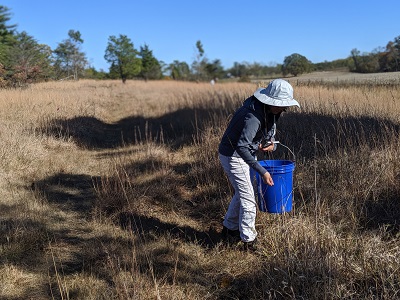
Some seeds come from plants that have developed in a specific ecosystem. Through many seasons of natural selection, these plants become genetically superior in colonizing that specific location. Take for example plants of the Serpentine. While Indian grass, Sorghastrum nutans is common in most meadows and grows robust and tall, Indian grass growing on Serpentine are stunted as the plants have to evolve to take on the challenging soil chemistry. In the effort to restore the Pink Hill Serpentine Barrens, Tyler collected native plant seeds from Willisbrook Preserve and one of the species collected is Indian grass. Willisbrook Preserve located in Malvern is another serpentine grassland. If we were to purchase seeds from a regular seed source to plant at Pink Hill, we would have lost the genetic signature of seeds from the Serpentine and the introduced seeds would be less likely to cope with the conditions on-site.
COMMUNITY – People who garden love to share their hobby, passing along their extra produce, plant cuttings and advice. Sharing seeds would be another way to bond with other gardeners or would-be gardeners in your neighborhood. Seed saving groups swap with each other and donate to community gardens. How nice would it be to save seeds as a way to connect with family and friends. Passing on seeds from grandmother’s salvia or Uncle Charlie’s habaneros is a way of keeping their legacy alive. A packet of seeds saved from your garden would be a wonderful gift for new homeowners or maybe a child who is getting into the joys of gardening.
How?
So you’ve decided to save seeds this year. There are a few things to consider. Only save open-pollinated seeds. This means that the seeds were produced by natural means: pollinators such as bees, birds, beetles, humans or wind. As long as pollen is not shared between different varieties within the same species, then the seed produced will remain true-to-type year after year. Take for example if you were growing Ausilio Thin Skin Italian Pepper and Ancho peppers side by side and then collected the seeds from these plants, you will probably get a range of pepper types. But if you only grow Ausilio Thin Skin Italian Pepper, seeds collected will be “true to type.” Blame the bees.
Some pointers:
- Select seeds from only the most vigorous plants. These are the plants that you want to grow again.
- Fruits must be fully mature. This may be beyond the point at which you want to eat them.
- Also, be prepared to store the seeds. After seeds are totally dry, place them in an envelope, write the type of seed, variety and date. Store in a cool dry place. Some seeds should be stored in a refrigerator because they need to chill before being planted. Do not use plastic bags because seeds may get moldy.
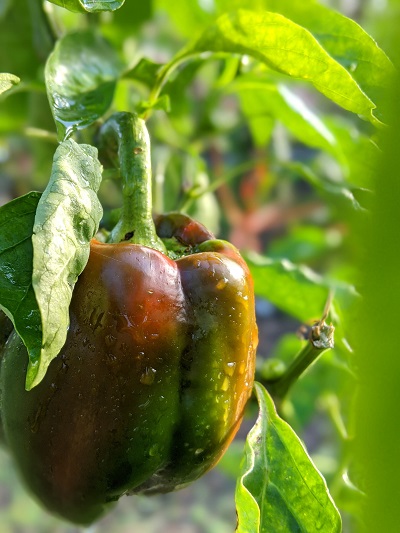
For those just starting to save seeds, Ben Mickel, gardener at Lucille’s garden, recommends beans and peppers to start. For beans, allow pods to dry on the plant as they will split open to release the seeds. Separate seeds from chaff and let seeds dry (out of the sun) for 1-2 weeks before storing. Saving pepper seeds is similar. Allow peppers to fully ripen and dry completely on the plant before harvesting. Split open the pepper and use your fingers to pull out the seeds. Spread seeds on a paper towel and place the paper towel in a dark warm space. After a week, place the seeds in an envelope. Note – If processing hot peppers, be careful not to get seed residue on skin or in eyes. Wear gloves.
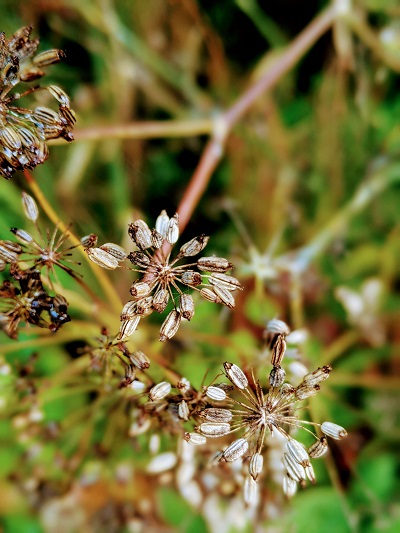
Many people grow fennel to attract butterflies (it is a host plant for swallowtails), for food or both. The added benefit to saving fennel seeds is the seeds themselves can add great flavors to food. It is fairly simple to do. Cut dry fennel heads and place in a paper bag. Dry for a week or two. Crumble seed head in a bowl and pick out the big pieces of stem. Shake bowl and the seeds will drop to the bottom and the lighter stems remain on top. Separate, label and store.
What about flowers? Flower seeds should be collected 2-3weeks after the flower has stopped blooming and the seed head has fully ripened. The seed head should be dry or fluffy so you know the seed has had a chance to be fully mature.
For example, to save coleus seeds, cut off the flower spike when most of the purple flower petals have fallen off. Place in a paper bag for a few days to dry. Shake the bag to release the seeds from the spike. Seeds from salvia are collected the same way.
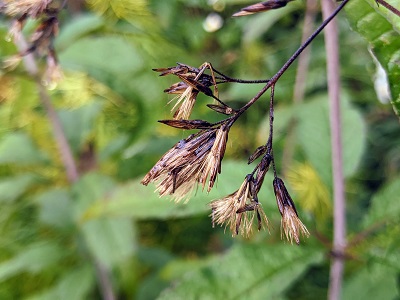
Joe Pye weed seeds are collected when the flower heads are dry and faded. Cut off the flower head and place in a paper bag. Shake seeds loose in the paper bag and store. If you are planning to plant the seeds in the fall, store for four weeks. If you want to plant the seeds in the spring, place the seeds in an open paper bag and store in the refrigerator for at least six weeks.
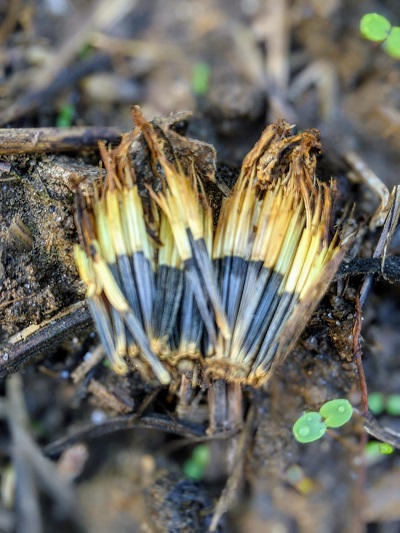
For marigold seeds, you need to cut a flower with petals that are dry and brown. You can open the base to see the seeds, which look like tiny black spears are inside. Pull apart and lay on paper towel to dry further.
Part of the fun of gardening is trying something new. If you haven’t attempted saving seeds before, why not try this year? For the price of a few paper bags, you could expand your whole gardening experience. Do let us know about your seed saving journey by posting on social media with #TylerSeedSaving.






